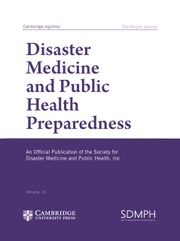Dear Editor,
The publication on “Evaluating University and Surrounding Area Factors Causing Variability in COVID-19 Vaccine Rates Among United States Universities” is interesting.Reference Lu, Leopold and Lee1 This study has an important goal of evaluating elements from both the university and the surrounding context that influence vaccination rates and student immunization policies. However, the utilization of material from public sources as revealed on the website may have limitations in terms of precision, modernity, and consistency of data. The precision, modernity, and consistency of data may be limited. Taking into account the differences in data reporting among universities is important, as these differences may have an impact on the analysis’ credibility.
In terms of statistics, both relationship analysis (correlation) and linear regression are appropriate for determining the link between variables. However, this study does not include clear control variables such as university size, government policy, or the level of access to public health care in the area. This may cause confusion (confounding variables), resulting in the misinterpretation of the results. Furthermore, quantitative analysis may be unable to capture the social and cultural components.
Interesting discussion questions include: How much do specialized social, cultural, or group beliefs in the area influence student vaccination behavior? Will the government’s unified approach assist in eliminating disparities in higher education vaccination rates?
Future research standards should emphasize researching field information with high-quality data, such as in-depth interviews with university leaders and students. To have a deeper understanding of the attitudes underlying immunization, long-term trends in public perception and behavior should be monitored to evaluate the effectiveness of various policies and provide a fresh approach that is truly adaptable and tailored to the context of each place.
Data availability statement
There are no new data generated.
Author contribution
HP 50 % ideas, writing, analyzing, approval VW 50 % ideas, supervision, approval.
Funding statement
Authors have received no external funding
Competing interests
The authors declare no conflict of interest.
AI declaration
The authors uses computation tool in language checking and editing.

